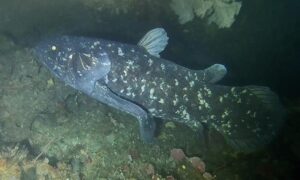It’s ugly, brown, lives in the depths, and all you can see is light, do you already know what it is? If you examine the post title, you might assume it has something to do with fishing. And you’re correct; not only is it a pricey delicacy for humans, but its hunting technique is similar to that of fishing. When a light ball appears in the dark depths of the ocean, an unsuspecting victim’s brain identifies it as potential prey. However, in this case, the roles are reversed, and the former predator becomes the prey of the anglerfish.
Anglerfish vary in size depending on the species and also on the sex, due to high sexual dimorphism. Females can reach sizes several times larger than males. The bacteria that cause bioluminescence are gram-negative bacilli. Scientists believe that the fish acquire these bacteria in the water or during spawning, as the esca secretes bacteria that get into the eggs.
The majority of anglerfish move slowly in the water because of the limited energy available in their environment. In 2005, a remotely controlled robot captured footage of an anglerfish floating upside down with its illicium hanging down, indicating that the fish was likely hunting.
Angler fish face several threatrs. One of the threats to anglerfish is the large amount of fishing in their area, as they are a very valuable commodity on the fish market. Another threat is the El Niño hurricane, which causes many dead anglerfish to float to the surface.



